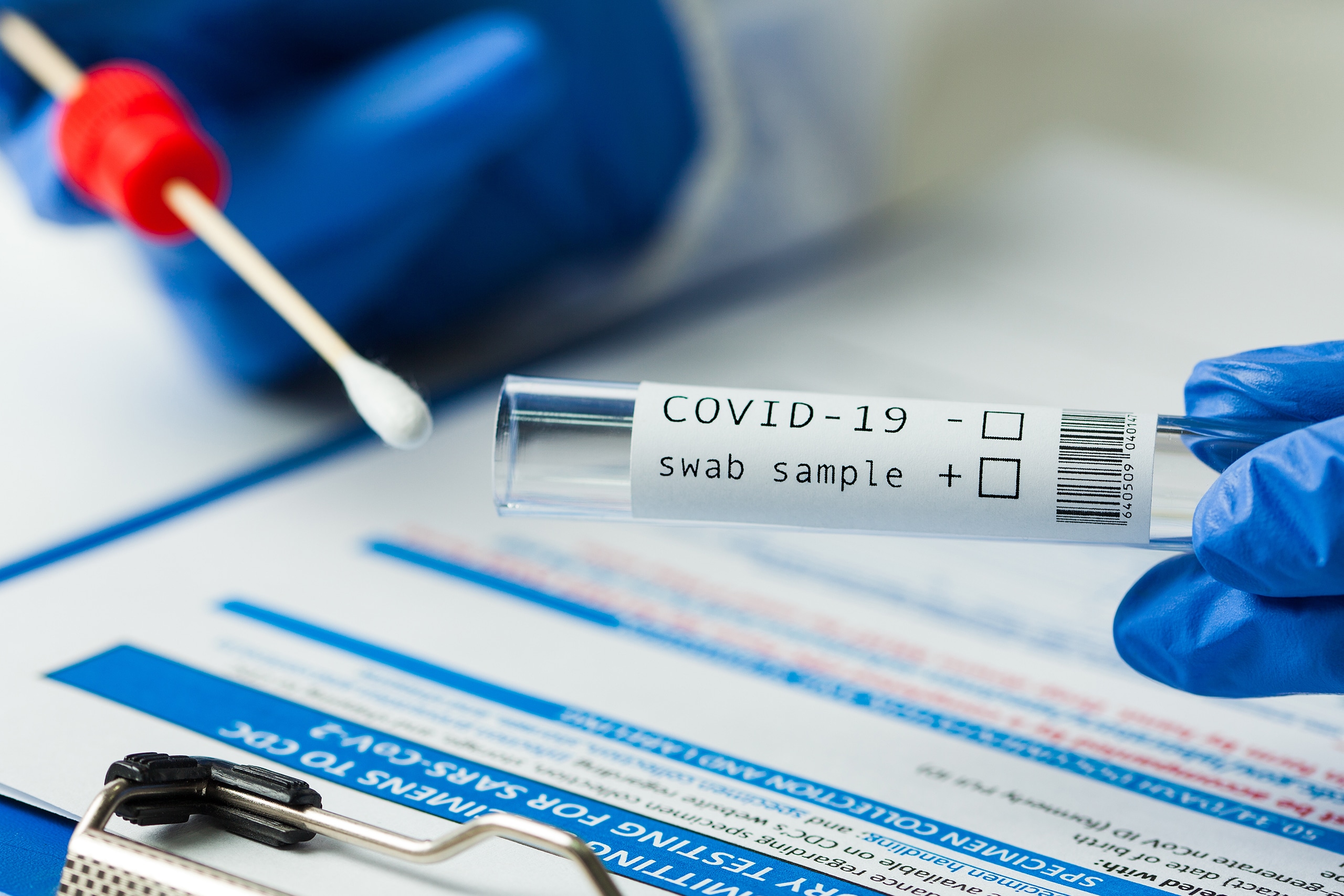Ask Our Experts
The latest COVID-19 developments

At Private Health Management, our team of PhD-led research experts continuously monitor the latest news, research, and developments for new insights on the COVID-19 pandemic to improve the health and safety of our clients. Here’s the latest:
What is the latest information regarding the newest SARS-CoV-2 variant, Omicron?
On Friday, November 26, 2021, the World Health Organization declared a new COVID-19 variant, originally identified in Botswana and now detected in dozens of countries across the globe, as a variant of concern (VOC). The variant, B.1.1.529, has been named Omicron and is characterized by a large number of mutations, including in the spike protein. Preliminary evidence suggests the Omicron may be associated with an increased risk of infection, but potentially with less severe disease compared to other variants of concern. More information regarding the transmissibility, disease severity, and effectiveness of vaccines against Omicron will be available in the coming weeks.
Though we are still learning about this new variant, its emergence illustrates the continued importance of ensuring everyone in the world has access to the vaccine, as variants more easily originate among unvaccinated people. The CDC recommends that everyone 5 years and older protect themselves from COVID-19 by getting fully vaccinated, and that all adults receive a booster dose as well.
Should children get vaccinated for COVID-19?
Although the rate of severe disease and mortality from COVID-19 is much lower in children than in older adults, there are compelling reasons to vaccinate children, including protecting them from potential health consequences of COVID-19 and reducing their chances of transmitting the SARS-CoV-2 virus to adults.
Though studies looking at the prevalence of long COVID in children vary widely in their findings, it is clear that children previously infected with SARS-CoV-2, even those with mild or asymptomatic initial infections, can experience ongoing symptoms. And, as of November 1, 2021, there have been over 5,500 cases and 48 deaths related to multisystem inflammatory syndrome in children (MIS-C), a serious condition in which multiple body systems, such as the heart, lungs, kidneys, brain, skin, eyes, or stomach, become inflamed.
As of December 2, 2021, over 7 million children have tested positive for COVID-19 in the US and that number is on the rise. Studies suggest that when children are the primary source of infection, they pass the illness on to someone else in their household 20% of the time. And of those times, nearly 50% of household members become infected. It has also been shown that the chances of children spreading infection to adults increases with decreasing age of the child, with the highest chance of spreading the infection coming from 0-3 years old.
We are still learning about the ways that children are impacted by COVID-19 and the COVID-19 vaccines. However, when weighing the serious and known dangers of the COVID-19 disease against the unknown and not-yet-observed consequences of the COVID-19 vaccine, the benefits of vaccination far outweigh the risks.
What is the current status of the COVID-19 vaccine for children?
COVID-19 vaccination for children is an area of ongoing public interest and clinical evaluation. On October 29, 2021, the FDA granted Emergency Use Authorization (EUA) to the Pfizer/BioNTech COVID-19 vaccine (Comirnaty) for children 5 through 11 years of age, and on November 2, 2021, the CDC endorsed that authorization by recommending children in this age group be vaccinated.
Are there side effects of the vaccine in children?
The available data for children 5-11 shows that the side effects from the vaccine are consistent with those seen in adolescents and adults, with the most common being flu-like symptoms such as fever, chills, and muscle aches. Severe allergic reactions, including anaphylaxis, are possible but extremely rare.
Can children who are vaccinated be impacted by myocarditis or pericarditis?
Though rare, cases of myocarditis (inflammation of the heart muscle) and pericarditis (inflammation of the outer lining of the heart) have been reported after mRNA (Pfizer/BioNTech or Moderna) vaccination in adults and adolescents; however, no cases of myocarditis/pericarditis have been found in children aged 5-11. Even in adolescents and young adults, the incidence of myocarditis/pericarditis following vaccination is very low, and the benefits of vaccination outweigh the risks.
Are COVID-19 treatments available for children?
On December 3, 2021, the FDA expanded authorization of a monoclonal antibody treatment for COVID-19 to all pediatric patients, including newborns. The treatment is a combination of two antibodies, bamlanivimab and etesevimab, and was previously authorized only for individuals 12 years and older. Bamlanivimab + etesivimab is now authorized for the treatment of mild to moderate COVID-19, or for post-exposure prophylaxis to prevent COVID-19, in all pediatric patients who are at risk for developing severe disease.
Who is now eligible for the COVID-19 booster?
On November 19, 2021, the US Food and Drug Administration (FDA) amended the emergency use of authorizations (EUA) for the Moderna and Pfizer-BioNTech COVID-19 vaccines to include a single booster dose for people over the age of 18 who have been fully vaccinated with any FDA-approved COVID-19 vaccine. The CDC has also endorsed this recommendation. The booster dose of the vaccine offers a continued layer of protection against COVID-19 and prevents against hospitalization and negative health outcomes.
What are the criteria for receiving the booster?
Before the expansion of the booster criteria, only those 65 years and old, and people between the ages of 18 – 64 who were either at high risk of severe COVID-19 reactions or had institutional or occupational risk of exposure to COVID-19 were eligible.
Now, a single booster dose of the Pfizer-BioNTech vaccine is available to all people over the age of 16, and a single dose of the Moderna or the Johnson & Johnson vaccine is available to all people over the age of 18. Those who received the Pfizer-BioNTech or Moderna initially are eligible for their booster six months after their original vaccination. Those who initially received the Johnson & Johnson vaccine are eligible two months after their original vaccination. Booster doses do not need to be the same as the original vaccine received; mix and matching vaccines is safe and effective.
Do I need to get a vaccine if I have already had COVID-19 and I have recovered?
While those who have contracted COVID-19 do have antibodies against the virus, these antibodies do not offer long-term protection from the illness, and it is possible to become ill with COVID-19 more than once. Vaccination strengthens your protection and can also safeguard against new variants of the virus.
Globally, infection numbers remain high, and vaccination is the best way to protect yourself against severe illness, hospitalization, or death resulting from COVID-19.
Travel
My family is travelling to the United States for the holidays. What are the COVID-19 testing requirements?
On October 25, 2021, the CDC amended its January 25, 2021 Order, titled, “Requirement for Proof of Negative COVID-19 Test or Recovery from COVID-19 for All Air Passengers Arriving in the United States.” This amendment updates COVID-19 testing requirements for air passengers 2 years or older boarding a flight to the United States, depending on COVID-19 vaccination status. On November 8th, 2021, the CDC further amended its testing requirements before boarding a flight to the US from a foreign country. All air passengers 2 years or older are required to present a negative COVID-19 viral test result, within a time period based on their vaccination status or present documentation of having recovered from COVID-19 in the last 90 days.
How do I determine if my family is fully vaccinated for air travel to the United States?
You are considered fully vaccinated:
- 2 weeks (14 days) after your dose of an accepted single-dose vaccine
- 2 weeks (14 days) after your second dose of an accepted 2-dose series
- 2 weeks (14 days) after you received the full series of an accepted COVID-19 vaccine (not placebo) in a clinical trial
- 2 weeks (14 days) after you received the full series of a Novavax (or Covovax) COVID-19 vaccine (not placebo) in a phase 3 clinical trial
- 2 weeks (14 days) after you received 2 doses of any “mix-and-match” combination of accepted COVID-19 vaccines administered at least 17 days apart
If your family members don’t meet these requirements, they are not fully vaccinated.
What do I need to know to stay safe while traveling in the U.S. during the holidays?
Make sure you understand and follow all state, local, and territorial travel restrictions, including mask wearing, proof of vaccination, testing, or quarantine requirements. For up-to-date information and travel guidance, check the state or territorial and local health department’s website where you are, along your route, and where you are going. If traveling by air, check if your airline requires any testing, vaccination, or other documents.
The CDC recommends against traveling if:
- You have been exposed to COVID-19 in the prior 14 days, unless you are fully vaccinated or recovered from COVID-19 in the past 90 days
- You are sick
- You tested positive for COVID-19 and haven’t ended isolation (even if you are fully vaccinated)
- You are waiting for results of a COVID-19 test. If your test comes back positive while you are at your destination, you will need to isolate and postpone your return until it’s safe for you to end isolation. Your travel companions may also need to quarantine.
If you are not fully vaccinated, get tested 1 to 3 days before your trip.
COVID-19 is surging in Europe. What does this mean for the U.S.?
Europe has become the epicenter of the global health crisis again with a new wave of infections. Throughout the pandemic, trends in Europe have typically foreshadowed things to come in the US. While some infectious disease specialists in the U.S. are predicting the U.S. may be next, and with infection and death rates in the US are currently increasing as well, it’s possible the U.S. may be better prepared with increased testing, vaccination, and treatments, including new antiviral therapies on the horizon. Either way, as we enter the winter season, health organizations across the globe are urging resisting complacency and continuing mitigation measures, including vaccination, booster shots, masks, social distancing, and testing, to minimize risk of spreading the disease.
What is the status of oral antiviral medications for COVID-19?
Since the beginning of the pandemic, pharmaceutical companies have been furiously working toward developing a pill to treat COVID-19. Two companies, Merck and Pfizer, recently released preliminary data on their efforts to this end. Merck’s drug, molnupiravir, initially showed a 50% reduction in hospitalization and death in individuals with mild to moderate COVID-19 at increased risk for severe disease, but in updated data released on November 26, 2021, the drug’s effectiveness dropped to 30%. On November 6, 2021, Pfizer released interim results from its study of PAXLOVID, which showed an 89% reduction in hospitalization and death in individuals with mild to moderate COVID at increased risk for severe disease. On November 30, 2021, Merck’s drug was reviewed by an advisory committee for the FDA, who voted 13-10 in favor of providing Emergency Use Authorization for molpnupiravir. The review date for Pfizer’s drug is pending.
What is the Emergency Temporary Standard (ETS) for COVID-19?
On November 5, 2021, the Occupational Safety and Health Administration (OSHA) issued what is referred to as an “Emergency Temporary Standard” (ETS), which is intended to minimize the risk of COVID-19 transmission in the workplace. The ETS requires large employers (100 or more employees) to either adopt a mandatory COVID-19 vaccination policy or require employees to either get vaccinated or undergo regular COVID-19 testing and wear a face covering at work. However, on November 12, 2021, the U.S. Court of Appeals for the Fifth Circuit ordered that OSHA “take no steps to implement or enforce” the ETS “until further court order”. Further information on the status of the ETS is pending.
* Always seek the advice of your physician or other qualified health provider with any questions you may have regarding a medical condition.
